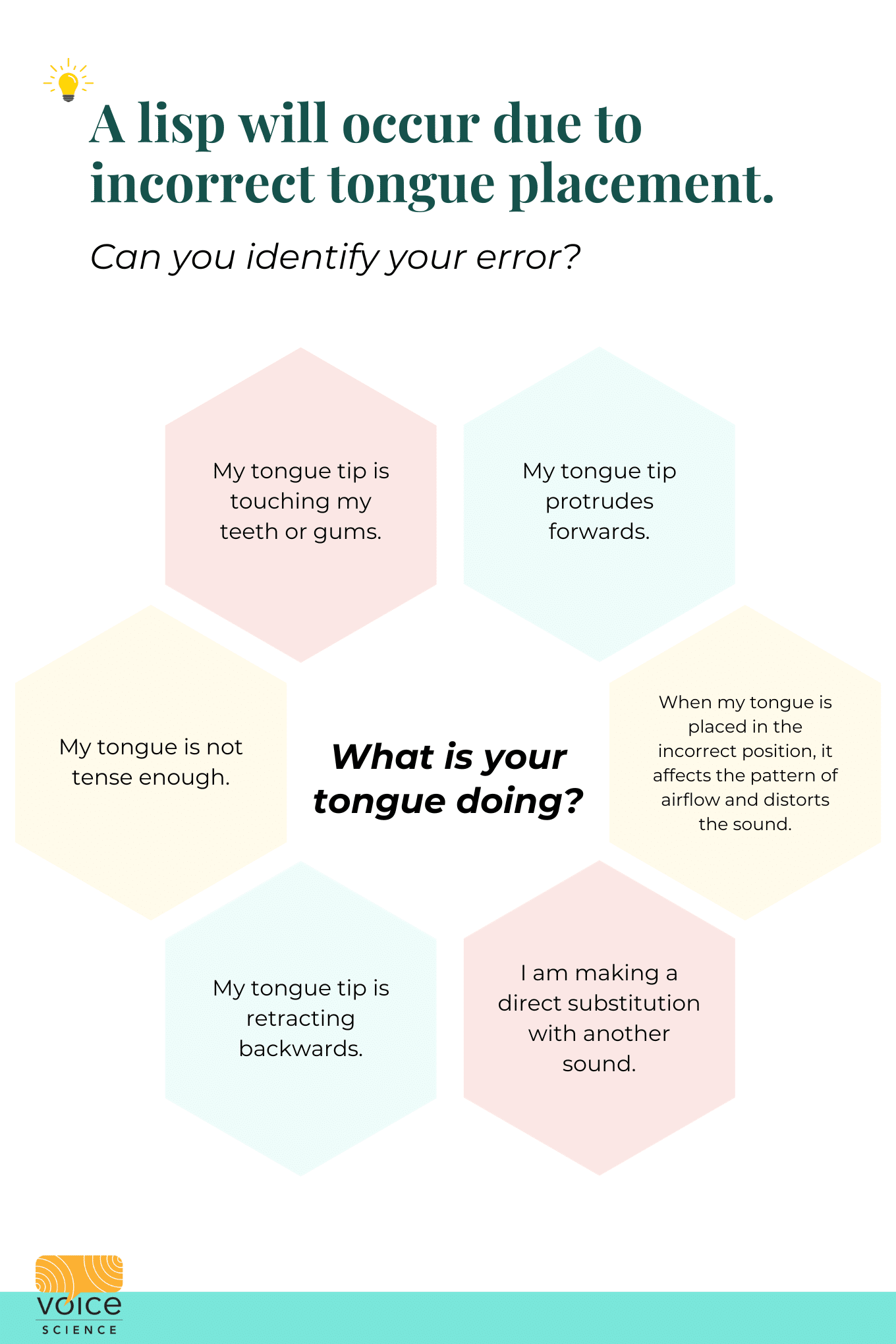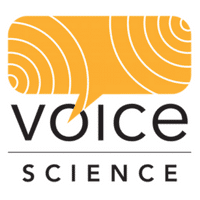Can You Fix Your Lisp As An Adult?
If you are wondering whether you can fix your lisp as an adult, this blog is just for you. Read about effective treatment options and score free tips.

Can you fix your lisp as an adult? We have been asked this question so much that we felt it was time to write a blog post about the topic.
If you have wondered whether it is too late to fix your lisp as an adult, this is the post for you!
You might have heard that the muscular pattern of your speaking is too established to be able to change as an adult. But don’t despair.
Because yes – you really can fix your lisp as an adult!
This blog will take you through:
- The definition of a lisp (and it may surprise you),
- The prevalence of lisps in adults,
- All the good stuff about effective treatments for adults,
- We also want to address the stigmas that can be associated with lisps and advocate for you around this topic and phrases like ‘speech impediment’
- And finally, we will give you a few helpful tips – our favourite thing to do- so you can start getting ready for therapy if that is the path you want to take.
What is a Lisp? 🤔
When we think of a lisp, many people go straight to the “s” = “th” sound distortion.
This is probably due to how lisps are depicted in the movies and TV.
But a lisp is defined as difficulty pronouncing specific speech sounds and can involve a singular sound or many sounds (Bowen, 2014). The “s” sound is not the only sound that can be affected.
What Causes My Lisp?
A lisp will occur due to incorrect tongue placement.
Your tongue can move in many directions so there are lots of variables that can create pronunciation mistakes by affecting air flow through the mouth. For example, sometimes the tongue protrudes between the front teeth, but there are also various other types of lisps.
It can be quite overwhelming if you’ve come across information on lateral, interdental and/or palatal lisps without guidance from a Speech Language Pathologist; part of our job is determining which affects you before offering you the relevant strategies.

How Many People Have Lisps?
Not many studies examine the prevalence of lisping, and those that do date back to the 1980’s.
Between 1-4% of adults have a residual lisp or speech error from childhood (Leske, 1981; Gillespie & Cooper, 1973; Culton, 1986).
Interestingly, one study found a high prevalence of lisping in native Dutch speakers, with equal prevalence across males and females (Van Borsel, Van Rentergem, & Verhaeghe, 2007).
The increase in higher prevalence may be due to changing cultural factors and speech patterns due to media figures, increase in tolerance towards speech distortions or that many people with a lisp have not received negative comments and so have not pursued intervention.
But all of these are just hypotheses, and more research is needed in the area.
What are the most common speech sound errors?
The most common speech errors that may continue to be present in adulthood include errors on the sounds:
- Liquids: l, r
- Fricatives: s, z, sh, th
- Affricates: ch, j/g
In English, mistakes on /s/ and /r/ are the most common errors among Adults (Veríssimo, Borsel, & de Britto Pereira, 2012).
Having a lisp is a very personalised story, and your narrative and experience are important to us!
Does having a lisp impact my communication abilities?
Absolutely not.
If you have a lisp, it does not mean there is a problem with your overall communication. In fact many people who have a lisp choose not to receive therapy for it.
Adult lisps rarely impact intelligibility.
They also don’t affect language, which is separate from the physical production of motor speech; the extended title of ‘Speech Language Pathologist’ is a nice reminder of how distinct those two domains are.
All of this means that, if you want to fix your lisp, it’s important to consider why it matters for you.
You may find that your lisp has no bearing on your social life or work commitments.
However, while the pronunciation distortions are often mild, they can have a significant impact on the individual.
Some people can feel very insecure about their speaking and even receive negative reactions about their speech (Veríssimo et al., 2012). Others experience impacts on their social life and employment outcomes.
Lisping can be perceived negatively as an adult.
Some studies report that listeners can form a negative bias about intelligence, education and masculinity regarding the person who lisps (Van et al., 2007).
We often hear from our clients that their lisp has impacted their career progression, dating life, and confidence.
Sadly, we have met lots of clients who feel “dumb” because they lisp.
Truly, this breaks our hearts as we know that intervention is valid, and no one should have to feel like this!
We are passionate about advocating for your communication, and a lisp does not affect intelligence or your ability to be an excellent communicator.
If you are questioning your speech or have tried a range of techniques to eradicate your lisp, it is time to reach out to Voice Science because
We love providing adults with the tools to achieve their communication goals and advocate for themselves!

Stigma & Your Lisp
One of our biggest pet peeves is how lisps can be portrayed in the media. While these jokes may be funny to the general public, we imagine that for those with a lisp, this becomes a cringeworthy experience.
A dissertation by Lockenvitz (2016) found that stigma and your experience with a lisp is a very personalised journey. Public stigma was shown to reduce communication comfort. Many speakers with a lisp will use tactics such as word avoidance. This always leads to increased frustration or the feeling that you can’t express yourself freely.
You Can Control Your Speaking Confidence
You can control your narrative.
If you check out our video Bust a lisp in less than 5 minutes!, you will see that many people with a lisp commented that one helpful strategy is to bring attention to your lisp by making a joke.
This strategy gives you power over the dialogue and how people may initially perceive your lisp.
Sometimes owning it can help prevent others from drawing attention to it.
It is also lovely to see the community come together to provide each other with support and helpful tips. So if you feel alone in this situation, head to the video over on our YouTube channel.
However, and this is a big however, stigma does not affect everyone.
Some people are not bothered by their lisp, and this is completely OK.
Advocacy is a high priority for us as speech therapists, so we want to stress that we are not here to say that having a lisp is bad.
We are, however, here at your service to offer evidence-based treatment if you have decided you want to fix your lisp.
I am ready to see a speech pathologist but I don’t want to be treated like a child!
So much of the research on lisps has been conducted with children, with a large gap in the research for adults.
But at Voice Science, we offer services exclusively to adults and are thoroughly experienced in working with adults if you are wanting to fix your lisp.
You can be confident that when you share your story with your speech pathologist at Voice Science, not only are we experienced in working in this area, but we will individualise all treatment so that it is functional for your goals.
Comparing adult versus child therapy for a lisp
The most significant difference between children and adults is that when working with adults, we provide information about the physiology and phonetic placement of the sounds.
We get straight to the point regarding your goals and work to give you a deep understanding of your target sounds and how they are produced.
We also consider how your lisp may have impacted on your social life and employment, so are equipped to provide evidence-based strategies around social communication and communication impact.
What should you consider when choosing a speech pathology clinic to fix your lisp?
✅ Experience working with lisps
✅ Engaging sessions that are individualised for you
✅ Intervention that is structured for adults
Hint hint… Voice Science ticks all the above boxes.
How does Lisp Treatement work?
We use the principles of motor learning to retrain your muscles to produce your target sounds. This involves…
If you have any questions, just let us know!
#1 We will show you your target versus substitution sound.
Contrasting the mouth position (phonetics) for how and where the sounds are produced in your mouth in an important step.
You will learn the skills to monitor your productions and self-correct where necessary so that you can work independently in the end.
#2 We will show you how to drill.
Your target sounds will be drilled in isolation, syllables, single words, carrier phrases and sentences. Your overall aim is to achieve high accuracy before moving to the next level.
#3 We will support you to transfer your sounds accurately to your everyday life.
Our focus is always on meaningful and contextual targets to ensure that your hard work and new target sounds carry over to spontaneous speech.
We will base tasks around your interests and employment situations so that you practice words and phrases of high frequency for YOUR particular circumstances.
#4 Creative Solutions
We will also show you how to utilise a range of technologies such as spectrograms to enhance your home practice and monitoring of particular sounds.
(Lipetz, & Bernhardt, 2013; Bauman-Wängler, 2004).

Your Unique Story!
Each person who has a lisp has a unique story to tell. At Voice Science, we understand the value of knowing the narrative of you, our client, and have the knowledge and experience to consider that there may be more to the lisp than just a lisp.
If you have ever considered seeking therapy for your lisp, there is no time like the present! We are here and more than happy to assist you to fix your lisp!
How many sessions will I need?
Having a lisp is such a personalised journey, and often there may be more to target than the goal to fix your lisp.
We have had clients that bust their lisp within one session and come back for another 1-2 to keep themselves accountable.
For other clients, it has been a longer journey with more sessions needed.
As an adult, motivation is the most significant key.
Many adults may notice quick results because they are incredibly motivated to change and are diligent with their home practice.
When it comes to the crunch, it is all about home practice.
Don’t worry – we have you covered here too! Our online learning management system, has been designed as a paperless resource to guide your practice so you can fix your lisp effectively.
So that as long as you have your phone handy, you can practise anytime, anywhere with age-appropriate content.

Learn Strategies for Clear Speaking and get a tailored blueprint to target your Lisp
PURCHASE NOW
$250
Our Guarantee to You
Voice Science sessions are engaging, stimulating and a first-class experience for your communication. Since extensive planning and detail go into tailoring sessions for you, we do not extend any refunds on any of our services. We provide a top-tier service, if you are dissatisfied with anything we’ll work to make it right because we are committed to advocating for your communication comfort.

References
- Bauman-Wängler, J. A. (2004). Articulatory and phonological impairments: A clinical focus. Boston: Allyn and Bacon.
- Bowen, C. (2014). Children’s speech sound disorders. John Wiley & Sons.
- Culton, G. L. (1986). Speech disorders among college freshmen: A 13-year survey. Journal of Speech and Hearing Disorders, 51(1), 3-7.
- Gillespie, S. K., & Cooper, E. B. (1973). Prevalence of speech problems in junior and senior high schools. Journal of Speech and Hearing Research, 16(4), 739-743.
- Leske, M. C. (1981). Prevalence estimates of communicative disorders in the US Speech disorders. Asha, 23(3), 217.
- Lipetz, H. M., & Bernhardt, B. M. (2013). A multi-modal approach to intervention for one adolescent’s frontal lisp. Clinical linguistics & phonetics, 27(1), 1-17
- Lockenvitz, S. B. (2016). The Experience of Stigma in Adults Who Lisp. University of Louisiana at Lafayette. Retrieved from https://pqdtopen.proquest.com/doc/1937930412.html?FMT=ABS
- Van Borsel, J., Van Rentergem, S., & Verhaeghe, L. (2007). The prevalence of lisping in young adults. Journal of Communication Disorders, 40(6), 493-502.
- Veríssimo, A., van Borsel, J., & de Britto Pereira, M. (2012). Residual /s/ and /r/ distortions: The perspective of the speaker. International journal of speech-language pathology, 14(2), 183-186.
A Lisp can be Frustrating, But Good Therapy Is An Asset
Our Team are Passionate About Speech Therapy Strategies
